Picture this: It’s getting late, and your dog won’t do his business during your last walk of the night.
He may do the infamous zig-zag, the sniff-and-stomp, or the wiggle-and-wag. He might even just stand there and stare at you until finally, he either goes or you give up and head inside.
Of course, he’s guaranteed to start whining for another potty break an hour later, or worse, leave an unpleasant surprise on your floor.
This kind of bathroom standoff behavior is almost exclusive to dogs walking on a leash — it rarely manifests in dogs who’re free to cruise the backyard at their leisure.
But training your dog to relieve himself on a lead is a must for all pups. You never know when your dog may need to be walked to go potty, whether you’re traveling together, lack yard access, or he’s healing up after an illness or injury.
Below, we’ll explain some of the reasons your dog may be potty-shy on a lead and share some ways to solve the problem.
My Dog Won’t Pee on a Leash: Key Takeaways
- Many dogs show reluctance to relieve themselves while on a leash — it’s a reasonably common problem. But fortunately, it is usually not terribly difficult to address with some patience and persistence.
- You’ll have to begin by identifying the reason your dog doesn’t want to poop or pee while leashed. For example, if your dog’s anxiety is preventing him from piddling, you’ll need to help him relax and feel more secure.
- In a worst-case scenario, you may just need to go back to basics and re-housetrain him. This will obviously take some time, but it’ll usually work and put an end to the pee-pee problem.
Why Won’t Some Dogs Poop or Pee While Leashed? Causes & Solutions!
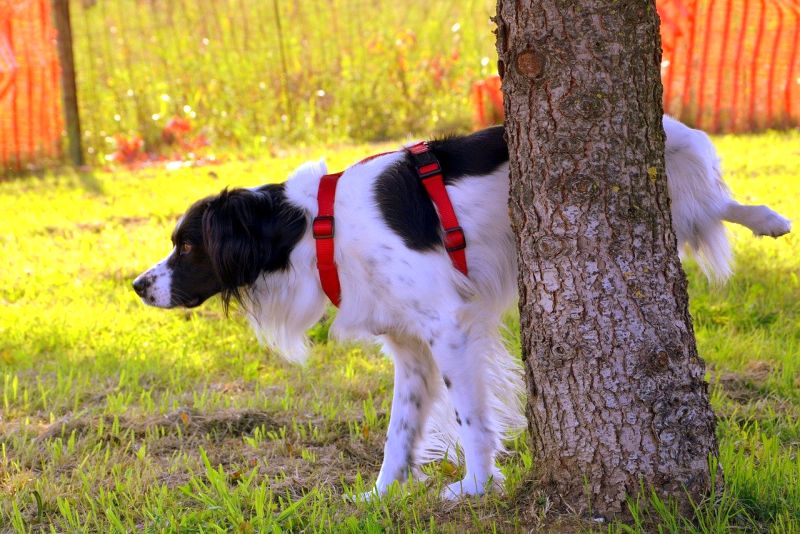
Canine aversions, such as refusing to potty while leashed, generally have a root cause you can diagnose and address.
But as always, you should start by considering potential medical issues. For example, if your dog isn’t eliminating at all (over the course of many hours), then you need to get your vet on the phone.
But as long as your dog is pottying eventually, he’s not straining, and there aren’t any changes to what his body expels, there isn’t a need to panic and call your vet right away. The problem is likely behavioral rather than medical.
Just tune in to your doggo’s surroundings and behavior, and see what might be behind the bathroom bust.
There are several relatively common causes for this kind of elimination reluctance, and you can correct most of them with minor adjustments.
Don’t have easy access to a vet? You may want to consider getting help from JustAnswer — a service that provides instant virtual-chat access to a certified vet online.
You can discuss the issue with them, and even share video or photos if need be. The online vet can help you determine what your next steps should be.
While talking with your own vet — who understands the ins and outs of your dog’s history — is probably ideal, JustAnswer is a good backup option.
New Experiences Can Cause a Pee-Pee Pause
A pottying pup needs to crouch, lift a leg, or squat, all of which make him feel vulnerable. So, walking your dog in a new area may make him hesitate to pop a squat. This is especially common if you’ve recently moved or are on vacation.
In these situations, it’s best to make your dog as comfortable as possible and give him time to decompress. Don’t expect him to piddle right away or grow frustrated with him. Instead, remain calm and supportive and let him sniff around and get his bearings.
In time, the excitement and fear will likely wear off, and he’ll do his business. Next time he has to go, be sure to revisit this same spot — that may speed things along.
Timing Changes Can Be Tricky
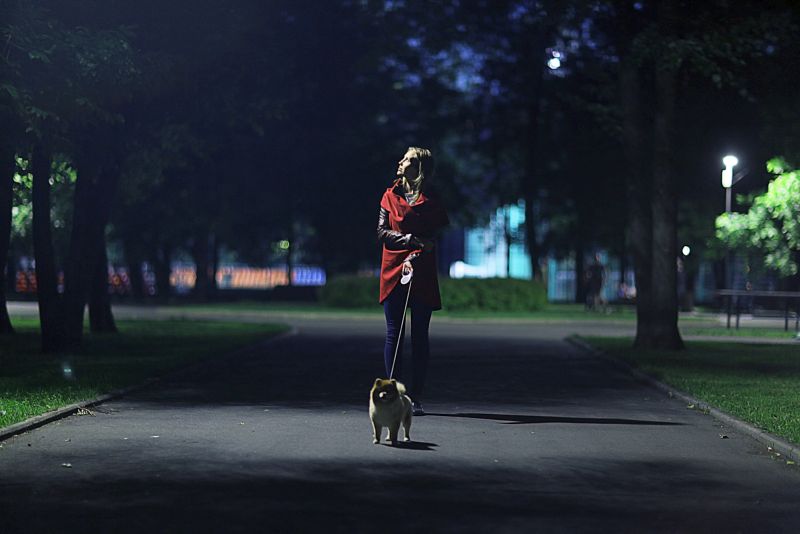
If you’re having to walk your dog at unusual times, you may also find that your doggo isn’t getting down to business as quickly as you’d like.
This may be because he simply doesn’t need to go at the time. This is more likely to occur with mature dogs than puppies, as puppies don’t take very long to find themselves running on a full tank. But it can happen with young dogs too — they don’t always have to go.
In these cases, you may just have to adjust your schedule to suit your pup’s bathroom tempo. If you go out and he doesn’t feel the need to go, just head back inside and try again in an hour or two.
Once you get a “breakthrough” peeing or pooping, just adjust your schedule to suit the timing. Over the next few days, you can gradually start shifting your bathroom breaks by 15 or 30 minutes to get back on a normal schedule.
No Need to Go: The Tank Is Just Empty!
Slightly related to timing issues is the possibility that your dog doesn’t need to go. Like us, dogs don’t ALWAYS have to go to the bathroom, especially on the schedule we’d prefer.
Over time, you will get used to your pup’s bathroom habits and can plan potty breaks accordingly, but starting out, you may need to take repeated walks to work out a routine.
If your dog or puppy didn’t potty during your walk, try again in 30 minutes to an hour. Usually, dogs need to relieve themselves first thing in the morning, after a meal, after play, and before bed.
Anxiety and Stress Can Cause Shyness
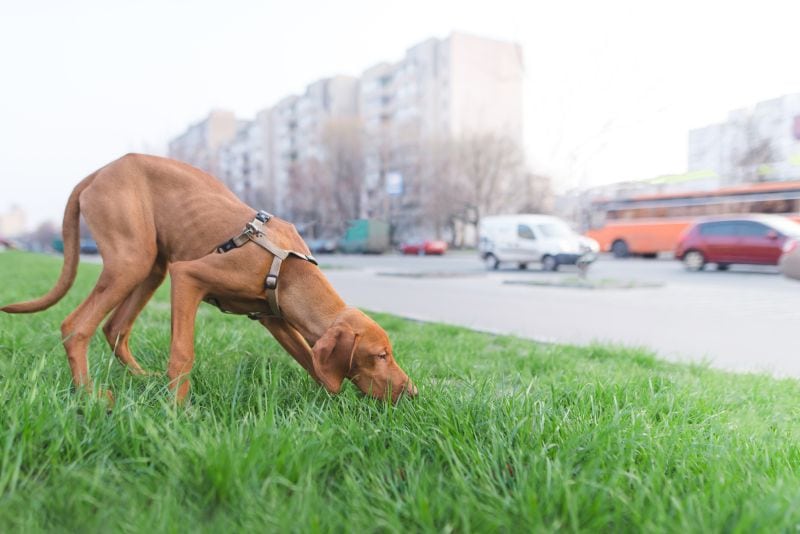
Anxious doggos might struggle to relax enough to “go” on the go. It ain’t easy to tinkle while you’re terrified.
Your stressed-out pup may focus on everything but pottying, actually, from every little sound to passing traffic and people. Anxious dogs will usually show clear signs of distress, from restlessness to pacing to freezing solid and refusing to walk, so be sure to look out for the signs that your pooch is stressed.
As with dogs in new situations, you want to alleviate your dog’s worries and concerns so he can relieve himself. Set him up for success by picking an area to walk that’s not too noisy or so crowded by traffic or people that he becomes overwhelmed. You’ll also want to work on implementing strategies to help ease your dog’s anxiety during walks.
If you can’t avoid crowds, cars, and other canines, you may need to try to walk him when things are as calm as possible. This may mean waking up a little earlier or waiting a little later before turning in for the evening. Just understand that this may cause some of the timing challenges discussed earlier, so this won’t be a quick fix.
But no matter the case, be sure that you allow him time to settle in and gain confidence. Don’t speak harshly to your pooch or rush him, just stay as calm, cool, and collected as possible while waiting patiently. Consider practicing other strategies that can help teach your dog to relax and feel more at ease.
Once you achieve success, try to return to his chosen potty spot, if possible.
Despite the best efforts of the staff, life at a shelter or rescue is rarely fun.
Dogs forced to live in these kinds of places and endure these sorts of life disruptions can be a bit traumatized, leading to severe stress and anxiety. And, as you may have already noticed, this can make them very reticent to relieve themselves while leashed.
Ultimately, the basic strategies we provide here should all help. However, you may need to be even more patient than normal and go to even greater lengths to help your rescued pooch feel comfortable enough to go.
Privacy Concerns: Stop Watching Me, Mom!
When you make a bathroom run, you prefer the door closed and no audience, right? Well, some dogs are the same — some four-footers simply need some privacy to poop or pee.
My old Lab would only potty behind bushes, for instance, which made living in an apartment interesting since he insisted on bathroom breaks in the azaleas.
Just know that if your dog sounds like a shy pottier, you may need to pick a less populated area to walk, if you can. You may also need to avoid being too focused on him while he’s trying to get up the nerve to go.
Excessively short leashes can also lead to issues in this regard, as some dogs may refuse to do their business right next to you. So, be sure to give your dog plenty of wiggle room by selecting the correct lead length for potty breaks.
A standard six-foot lead will work, but if it’s safe to do so in your area, consider using a longer lead to give him enough slack to pick his ideal spot.
Dogs Who Aren’t Housetrained May Not Get the Idea
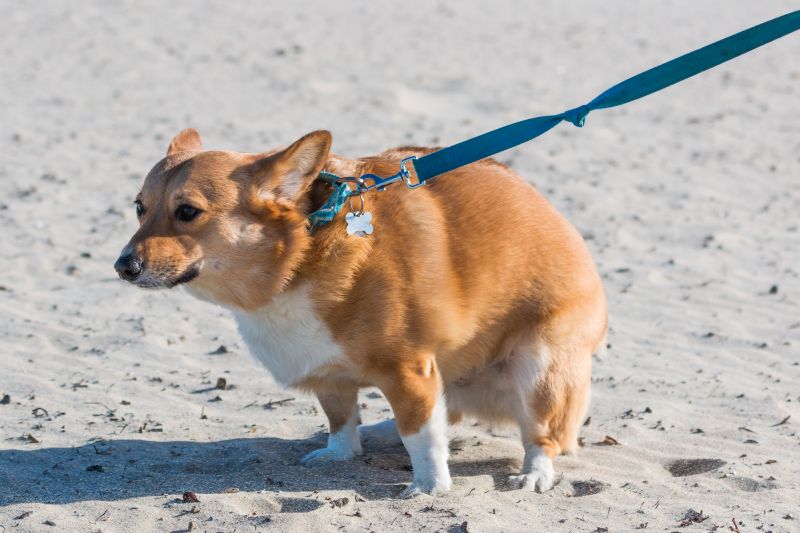
Some dogs have trouble pooping or peeing on a leash because they’ve just never been properly housetrained. And unfortunately, these dogs need more patience than others as you work together to associate walking outdoors with pottying.
This is undoubtedly an issue with puppies, but it can also be a concern with adult dogs who’ve spent a long stretch in a shelter, where pottying indoors on concrete is sadly their only option in some cases.
Just remain calm with your dog as he learns to do his business outdoors and work through the basics of housetraining (which we’ll detail below). Housetraining might require you to use a crate, and it may mean a few accidents here and there, but you will see results with patience and a strict routine.
One relatively simple reason that dogs can appear reluctant to go to the bathroom is something called substrate preference.
Simply put, some dogs like going on grass, while others prefer sand or dirt. Still others — especially those who’ve been raised in shelters — may prefer concrete.
You’ll eventually want to teach your dog to go on a variety of different substrates, but — at the outset — just try to figure out where he likes to go and visit these types of spots. Over time, you can get him used to pooping and peeing on any kind of ground cover.
How Can I Train My Dog to Poop and Pee on a Leash?
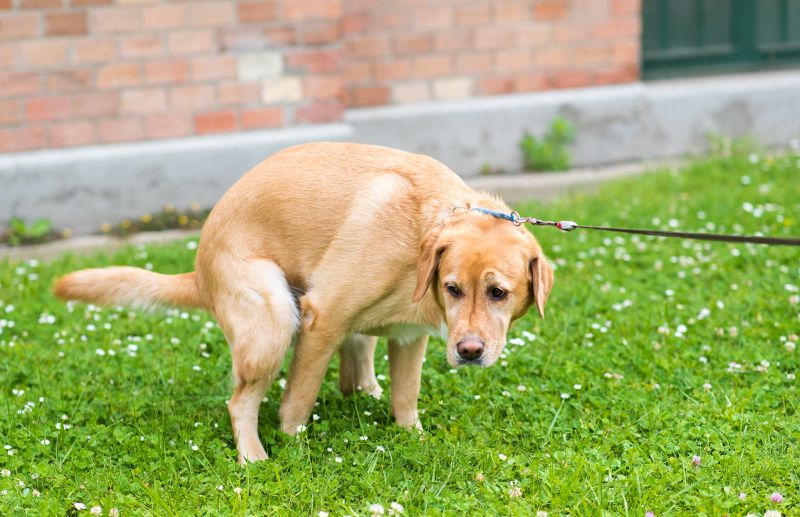
Every dog should be comfortable pottying on a leash. You never know when it’ll be required.
I recently had a new roof put on my house, and I had to walk four dogs who normally have free access to the backyard. It was tiring, sure, but everyone knew to do their business right away.
This skill is also a game-changer when you’re working on housetraining, as your dog will associate going “outside” with pottying right away.
Your first step is to address any underlying concerns we’ve highlighted above, whether it’s anxiety over walking in a new place or overstimulation from too many passersby.
Not only will fixing these issues help your canine conquer pottying on a leash and relieve anxieties, but it strengthens his trust in you and, overall, your bond. Remember to remain patient and not raise your voice, as this can worsen existing issues.
As your dog becomes more comfortable, revisit the housetraining basics to ensure success:
- Crate training 101 — he’s either supervised, crated, or outside. The basic premise of crate training is that you simply prevent your dog from going indoors by keeping him under your watchful eye or inside his crate. Then, you’ll take periodic walks to let him relieve himself and establish an association between the great outdoors and pooping or peeing.
- Morning and night: Always take your pup out first thing in the morning and before bed like clockwork. Making him wait too long in the morning isn’t just a mess waiting to happen; it can be incredibly stressful as he tries (and possibly fails) to hold it in.
- Mealtime breaks: Plan walks for after your dog eats or drinks. Sooner rather than later, for puppies. A good rule of thumb is to head outdoors within five minutes of meals or drinking.
- Establish a designated potty zone: Always walk your pup in the same spot, if possible. Bathroom breaks leave behind your doggo’s scent, making them more appealing stops for future walks.
- Walk your dog often enough: You likely don’t only potty twice a day or wait for hours on end to head to the restroom, so don’t expect either from your dog. Remember that puppies generally can “hold it” for one hour for every month of age, meaning bathroom breaks will be frequent for a while (mature dogs can go much longer between breaks). You also may need to increase bathroom breaks if your dog has certain medical conditions, like diabetes or Cushing’s. If you work long hours, hire a dog walker to pop in mid-day for a quick leg stretch and tinkle trip.
K9 of Mine readers can get $15 off their first dog walking or sitting service with Wag!
- Allocate enough time: Don’t expect your dog to immediately potty when outdoors. Yes, some dogs do their business right away, like my Staffy, Moxie, but others, like my Peke mix, Taj, need time to pick the right spot and enjoy some smells before assuming the position. Remember: Your goal might be for your dog to potty and then head right back inside to get on with your day, but your pup is out there for fresh air and exercise, along with his bathroom break. Give him the chance to be a dog, too. If he doesn’t do his business within five minutes, then you can head indoors.
- Stick to a schedule: Maintain a routine, so your dog’s bathroom habits become predictable. This means walking and feeding around the same time every day. Not only is this beneficial for housetraining, but it can also help with noting any changes in your dog’s routine day-to-day, such as eating less, pottying more, etc.
- Establish commands: Associate pottying with words, whether it’s “go poop” or “tinkle time.” Keep your tone upbeat and happy, and only use them when your dog relieves himself. Since peeing and pooping are different activities, always use two different words to avoid confusing your pup. This is one of many ways you can get your dog to poop and pee more quickly.
- Reward and praise: Shower your dog in praise when he potties on the leash. You may also offer a treat too, but use these sparingly in puppies, as eating can stir up the need to poop.
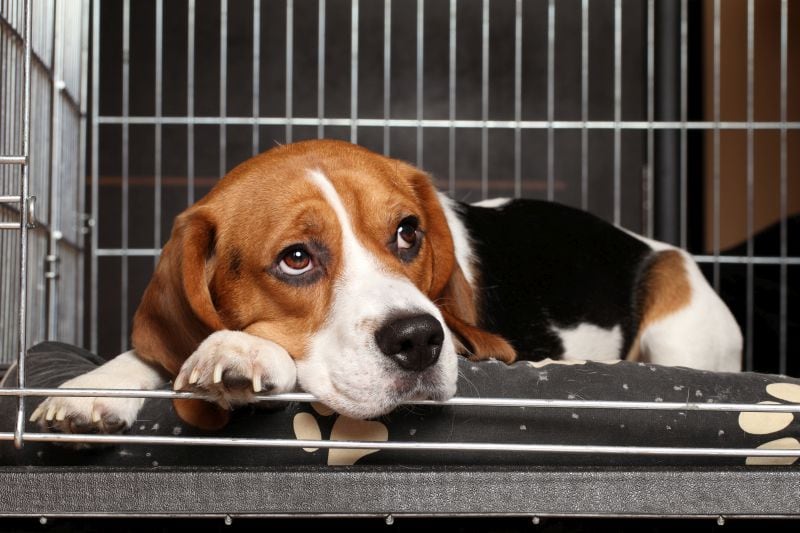
What Can I Do While Re-Training My Dog to Pee on a Leash?
Re-training your dog to use the bathroom while leashed can take some time, but there are a few hacks out there to make the process easier, including:
- Try potty training spray: Some dog potty sprays are designed to encourage your dog to do his business by mimicking the smell of urine or feces. Just apply in the area you’d like your dog to go and wait. These can be quite useful when trying to get your dog to pee and poo in a specofic spot while leashed. However, just know these sprays have mixed results. Many owners don’t seem to have much success with them!
- Thoroughly clean soiled indoor areas: Waste bacteria and odors can linger, even if we can’t smell them with our sniffers. These aren’t only gross but can work against you when you’re training your dog by signaling, “hey, you pottied here before.” Always use an enzymatic or oxidizing carpet cleaner for urine to power through pet messes and eliminate all traces of bacteria to prevent repeat soiling.
- Leash training: Make sure your dog has leash training down to reduce anxieties on the go. This means curbing any nuisance behaviors like tugging, chewing, or jumping, too, which will allow everyone to calm down and enjoy the walk and, ultimately, the potty break.
- Choose the right leash: Select a leash that’s long enough for your dog to have room to do his business. Six-feet is best, as it allows your dog to wander far enough to potty but remain close enough that he can be wielded in quickly if needed. However, if your dog demands a little more distance before doo-dooing, you can opt for a 10- or 12-foot leash instead. Just make sure it is light enough that it doesn’t weigh your dog down.
- Increase walks: Upping the number of walks your dog takes a day not only helps his physique, but it also keeps his digestive system running along smoothly. It also provides your pooch plenty of opportunities to potty outside, setting him up for success.
- Practice the umbilical method: If your dog isn’t housetrained, keep him tethered to you with a tie down so he can’t sneak off and potty anywhere. You’ll soon pick up on cues that your pooch needs to relieve himself, like sniffing and circling.
- Use a crate or gate: When you’re not around to watch for pottying cues, you can contain your dog to tiled areas of the home using an indoor dog gate, or you can just crate him. This is best for puppies, of course, and should always be done compassionately. Crating should NEVER be used as a punishment, nor should he be forced to endure crating for hours on end. If you expect to be away for longer than eight hours, hire a dog walker or have a friend pop in to take your pup for a stroll.
- Purchase potty pads: Pee pads and grass patches allow your dog to relieve themselves without a huge mess indoors if needed. These are sometimes used by puppy owners and gradually moved outside to aid in housetraining, too.
***
Does your doggo do his business on a leash? Do you have any tips or tricks for other owners trying to get their pup to do the same? Share them in the comments!
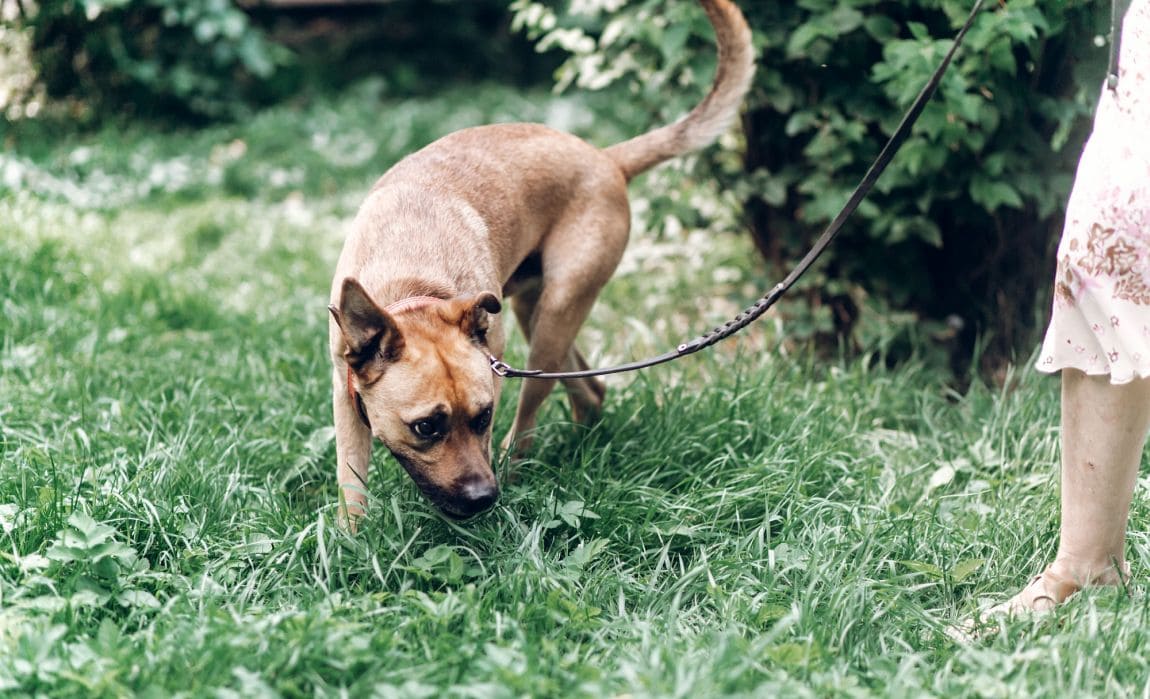
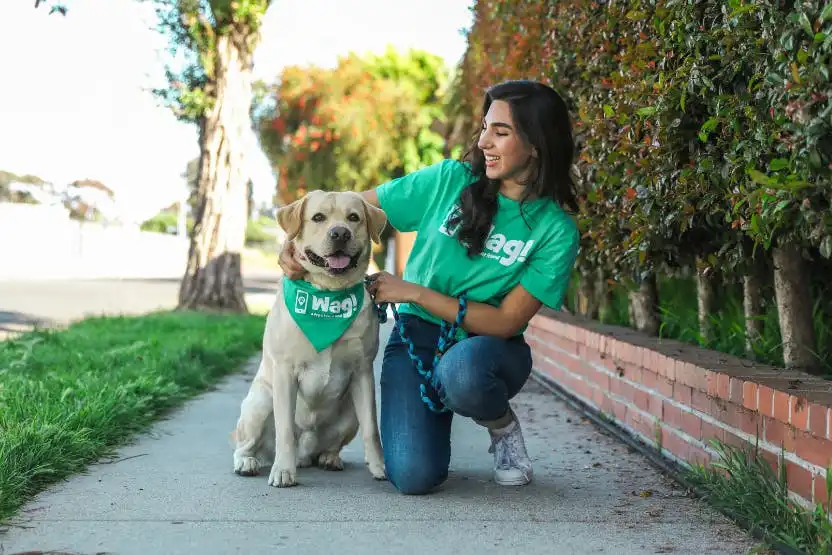

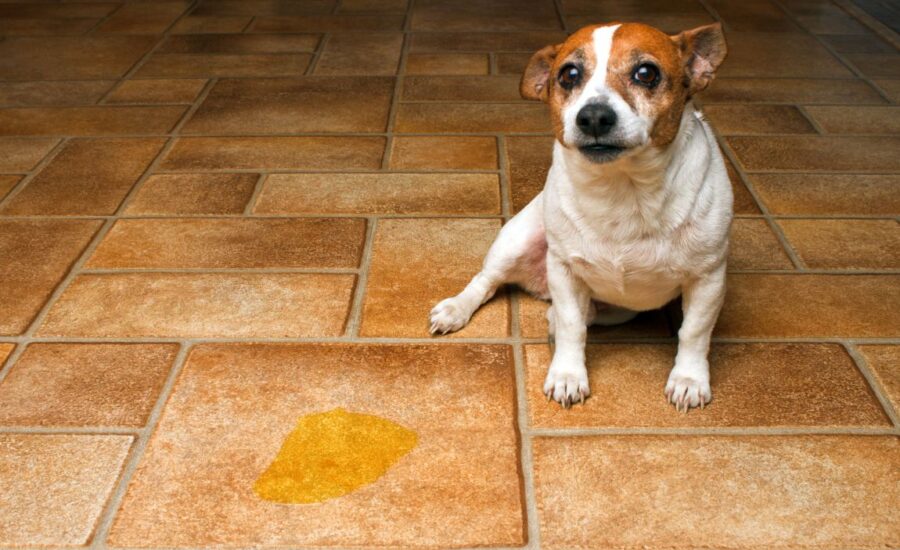


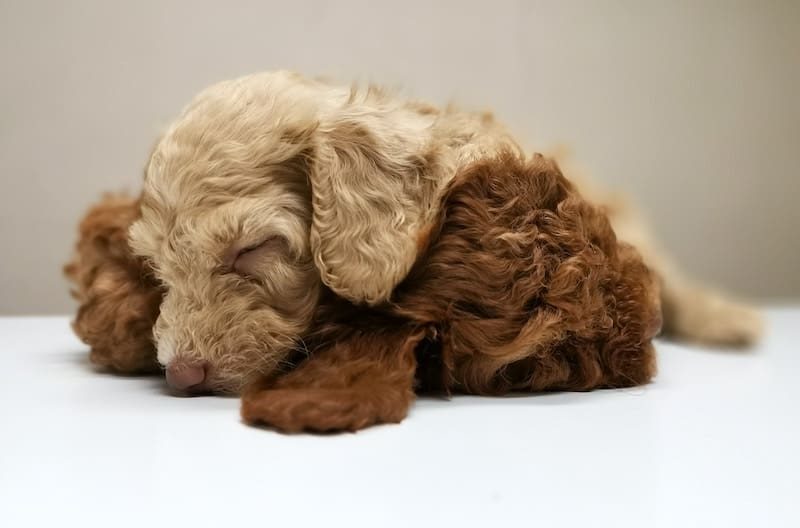
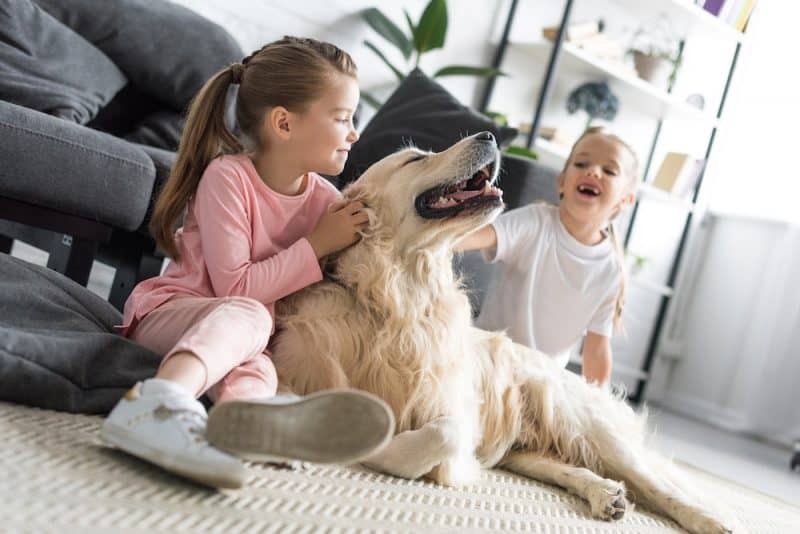
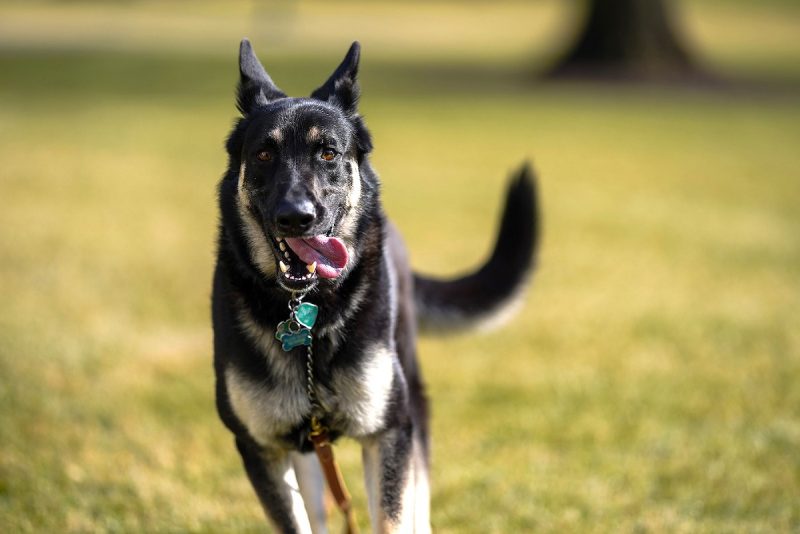
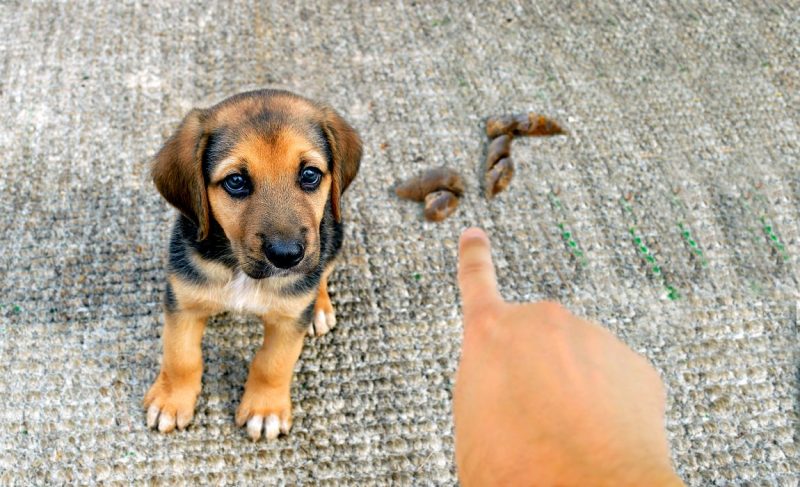
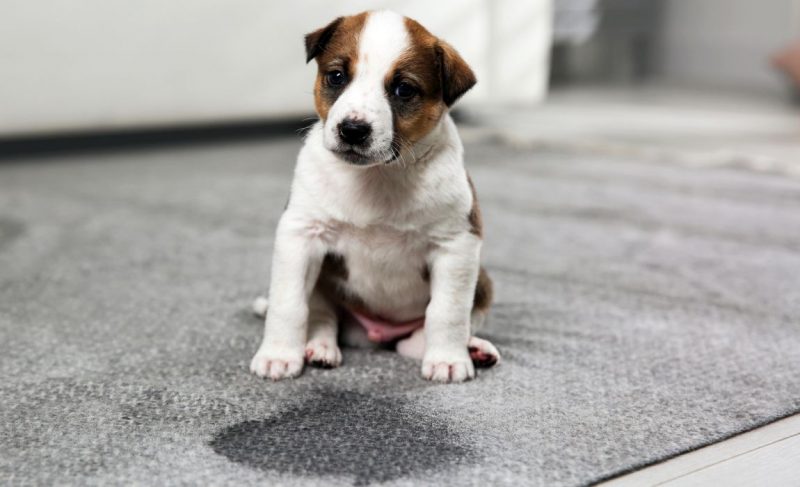
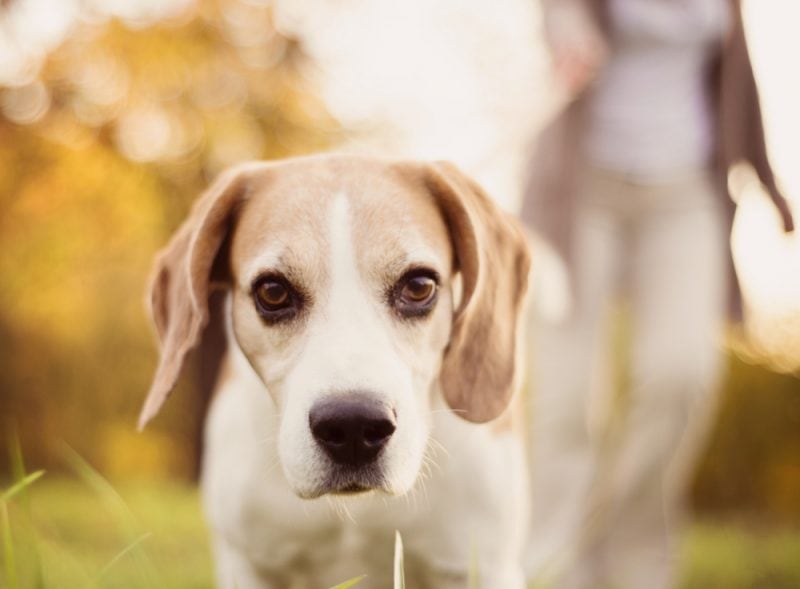
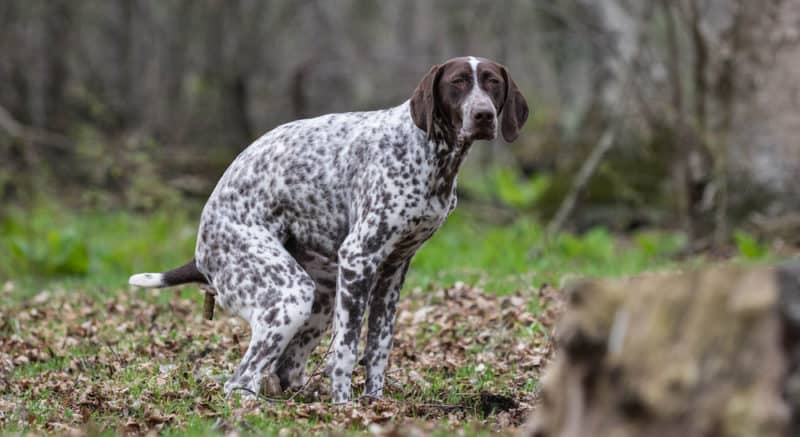

Leave a Comment